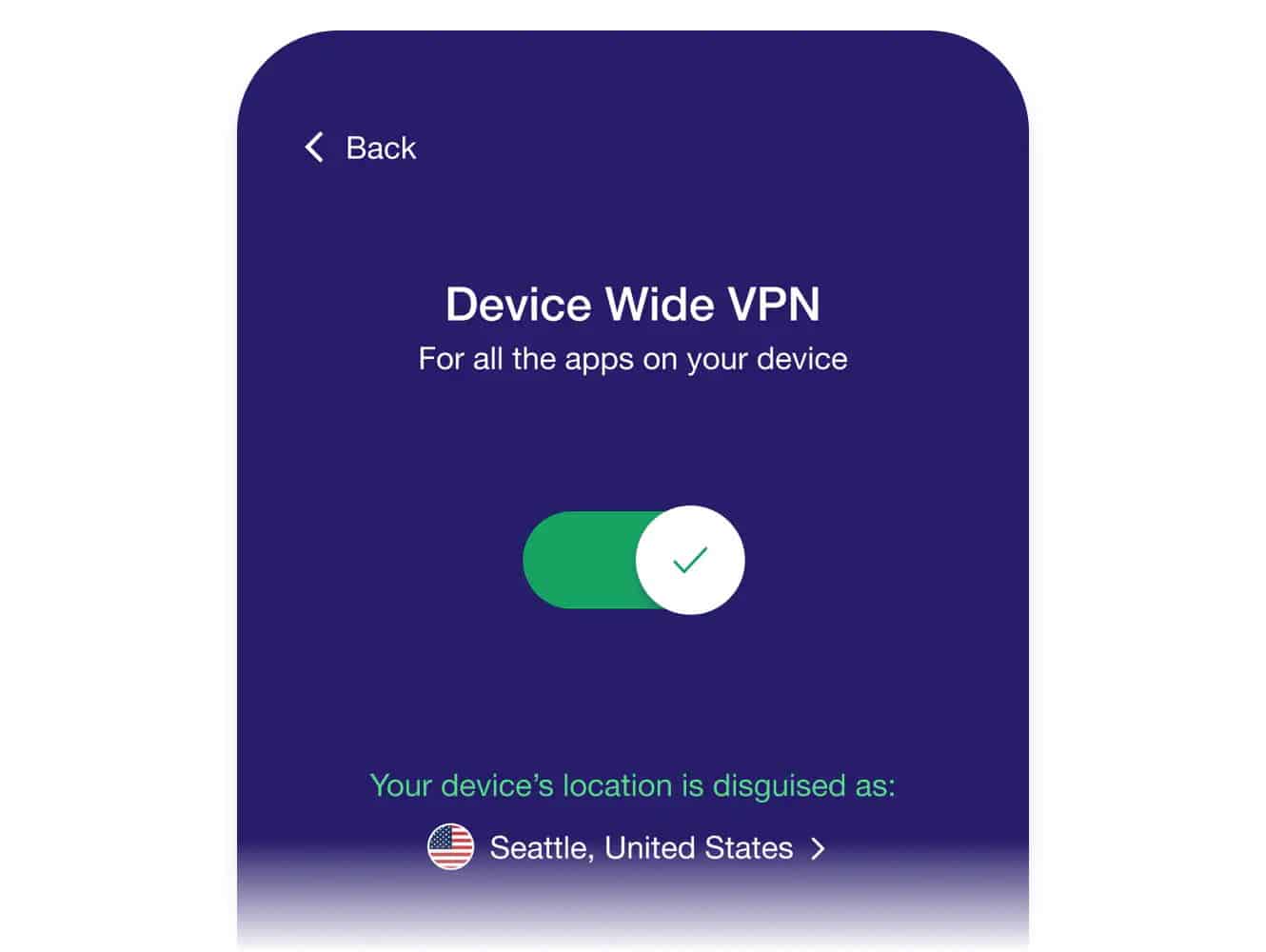
Avast Secure Browser lands on iOS/iPadOS for private browsing on Apple devices
Having already enjoyed success on macOS, Android and Windows, the security and privacy focused Avast Secure Browser has made its way to iOS and iPadOS. With security at the forefront, the undoubted headline feature of the browser is the integrated VPN facility.
On top of this, there is ad blocking and tracker blocking, both of which go a long way to improving your online experience and ensuring that your data does not fall into the wrong hands. The ad blocker is customizable, so you can choose to block absolutely everything, or opt to allow less annoying ads to be displayed.

Telematics offers hope in the nuclear (verdict) era
Fatal accidents are a tragic occurrence for all parties involved. The transportation industry -- including telematics providers -- should make preventing these tragedies its highest priority. With the use of telematics, the latest in video technology, and connected vehicles, many of these incidents can be prevented through consistent -- and proactive -- vehicle maintenance and continuous driver monitoring, coaching and evidence-based accountability, saving countless dollars across the industry and, more importantly, many lives.
For better or worse, the proliferation of civil cases with jury verdicts totaling more than $10 million, known as "nuclear verdicts," has significantly altered the business of fleet management. For instance, insurance premiums have doubled every several years while general inflation marches at a much smaller pace, according to The Wall Street Journal. When a nuclear verdict hits a mid-sized trucking company, it often triggers a ripple effect throughout the industry. While the company that faces the judgment could be bankrupted, others that have nothing to do with it could see their insurance premiums spike as well.

Advantages of remote onboarding
The world of work has changed, and remote work is no longer an option or perk. Teams worldwide have been forced to go fully- or mostly-remote, many with a weekend’s notice. As the months of working from home drag on, we’ve had to readjust our processes and systems -- one of which is employee onboarding.
The importance of a strong onboarding program can’t be overstated -- especially since only 12 percent of employees are happy with their organization’s onboarding programs, and 50 percent of new hires leave their organizations within their first 18 months. While remote work is associated with decreased retention, we can’t deny the outsized impact of an employee’s first few months on the rest of their tenure.

6 emerging technologies in 2021
Technology is always changing. Whether it’s delivery apps taking off because of a global pandemic or video games incorporating virtual reality (VR), technology holds an immense amount of power.
As 2020 comes to a close, many are wondering what the next year holds. The following six emerging innovations are fields that will develop further throughout 2021.

Operating as cloud first: What it really takes
Let’s take a look back to a time before COVID-19. Systems engineers walked the datacenter floor and managed the infrastructure on-site. A team could purchase, physically receive, and rack-and-stack new infrastructure if needed to run critical platforms on an OpEx model. For many, this former reality seems like a long lost memory.
Since the beginning of the pandemic, price instability has limited predictive budgeting, manufacturers have faced debilitating delays and individuals can no longer enter and exit a datacenter at will. The demand for web-based applications has increased as consumers change the way they interact with everything from grocery shopping to entertainment. Many organizations are facing a harsh reality of working to meet demand while relying on an unstable supply chain.

Bomaker Polaris is an ultra-short-throw 4K laser projector that promises top-notch picture quality at a (relatively) affordable price [Update]
Bomaker has announced that it will soon launch a 4K ultra-short-throw laser projector on Indiegogo, and early birds can grab a substantial discount on the device when it goes live for crowdfunding.
Bomaker, which manufactures sound bars as well as projectors, has revealed the specs of the Polaris 4K Laser TV, which the firm promises delivers much better results than rival projectors (DLP or laser).

The challenges of video conferencing interoperability
It’s a scenario we all know too well and one that has happened in workplaces around the world. As colleagues gather together in the boardroom to start an important video meeting with a client, they’re stopped in their tracks when they realize they are waiting in a Microsoft Teams Room and the client is on Google Meet.
Then the IT department find themselves on the other end of frantic calls and the inevitable question -- 'How do we get this to work?' This can be a frustrating experience, especially for organizations that have invested in expensive hardware or unified communication services.

Delivering value to a remote workforce: A practical approach
The overnight switch to remote working triggered by the COVID-19 pandemic has caused an unprecedented amount of change to the usual ways of working. The impact will continue to be felt for the foreseeable future -- and as a result, IT departments’ approach to delivering services to their organizations will need to keep pace with the evolving requirements of this newly remote staff.
To that end, IT needs to embed itself deeper in the organization to understand the unique requirements of every single stakeholder -- be it the C-suite or the manager answering the customer call -- so that those professionals can do their jobs effectively, enabling the business to realize its strategic goals. In practical terms, what does this mean? How can IT departments put these tactics into practice in their enterprises?

Redefining Security post-pandemic: Empowering change control in the new normal
Amid the COVID-19 pandemic, remote working has added a new dimension to the security, compliance, and digital transformation demand landscape. Now, more than ever, it is increasingly important for organizations to embed security solutions and processes that reduce complexity and massively increase the automation of killer manual tasks.
Last month, our team at New Net Technologies had the opportunity to host a virtual panel on securing digital transformation and what COVID-19 means for cybersecurity as we continue to navigate the growing remote workforce. The panel, which consisted of several security experts, focused on the topic of redefining security in a post-pandemic world. The session kicked off with the question, 'Have you noticed a more compliant workforce?'.

The importance of TLS/SSL decryption in a zero-trust model
With upwards of two-thirds of UK adults set to work remotely for the remainder of this year, it’s clear that the pandemic will create a larger attack surface, and increase opportunities for cyber criminals. In effect, the enterprise perimeter has not only expanded but it has also become much more distributed.
Likewise, modern cyber attacks are not just limited to network intrusion from the outside. Internal threat actors can often be found at the center of sophisticated attacks. Therefore, today, threats come from both inside and outside the organization, via the business partner and supplier ecosystem, and through employees working remotely. This means we need to re-assess and re-think the way we defend our networks, users and data. For example, organizations will need more support around connecting and managing BYOD devices on the home network, including sharing of policies and tools around sensitive data, which could be accessed via insecure Wi-Fi. Additionally, with ransomware, phishing and DDoS attacks growing exponentially, they will also be looking for technologies that enable them to protect networks from cyber attacks, especially those that threaten network availability.

How MSPs can gain a competitive edge with automations
It’s been quite a year for MSPs and IT service providers. Across the country, work volume increased rapidly in the early days of the pandemic, with businesses scrambling to enable remote operations and set up employees to work from home.
As the year progresses, many MSPs are considering how to work more efficiently and effectively to meet customer demand while combatting pandemic-related challenges. They are now looking for ways to improve workload management, maximize revenue and gain a competitive edge.

BYO e-commerce: Harnessing the trend for future growth by overcoming operational challenges
It’s no surprise e-commerce activity is growing at unprecedented rates as a result of the COVID-19 pandemic and local governments’ stay-at-home orders. In fact, e-commerce spending came in at $77 billion higher than expected from March-June of 2020.
Despite a push for more sophisticated e-commerce strategies even pre-pandemic, many retailers are hesitant to adopt new technology to manage the growing trend and often lose out on potential avenues of revenue as a result.

The most vulnerable tech professions during COVID-19
In May, the United States hit a 14.7 percent unemployment rate and more than 20 million jobs lost since the beginning of the COVID-19 pandemic. It is the highest level of job loss to hit the U.S. since the Great Depression. While things have improved since then, with the Bureau of Labor Statistics reporting an unemployment rate of 7.9 percent for September 2020, the economy remains in an uncertain position.
While many industries have been hit hard by the COVID crisis, from airlines to restaurants to live music venues, the pandemic and its economic reverberations have touched every business in some way. A litmus test is the tech sector. What was once a booming part of the American economy is now struggling with the same challenges as every other industry.

Making the most out of your technology stack in times of economic uncertainty
Variations on the expression "to make do" are found throughout the western world. They are typically used in connection with managing situations where some of the resources you would prefer to have are missing, as in 'making do' by preparing a meal with several key ingredients missing. However, the concept of making do doesn’t just apply to domestic life; it applies with equal force to business life -- particularly at a time when corporate finances are strained and securing an ideal mix of resources may not be an option.
The economic shock triggered by the global pandemic has been precisely that sort of situation for many businesses -- companies that have seen their revenues plummet and been forced to slash back on spending. While their ideal stack of digital assets might include new licenses for sexy enterprise software, that sort of outlay may not be possible. Yet the organization’s need for operational efficiency has become more critical than ever -- even a matter of survival.

How to solve your data storage dilemma with cloud object storage
In a world that thrives on the consumption of data, it is not surprising that today we are witnessing tremendous data growth to the point that it is now in danger of overwhelming organizations.
This is creating massive data sprawl whereby many organizations are experiencing a slowdown in operational productivity and efficiency and this sprawl is hampering future innovation and growth.

